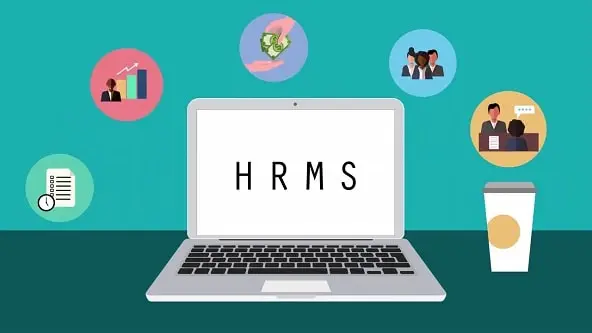What is the Difference between HRMS and HRIS?
One of the critical parts of any organization is human resource management. Every organization has a dedicated team for human resource management, and they are involved in many strategic and administrative tasks. These tasks are not only time-consuming, but they are mostly repetitive. Some organizations follow a manual approach for such tasks, often leading to inefficiencies and inaccuracies in the workflow and the data. Many organizations invest in HR suites or software to make it people-friendly.
These HR suites greatly help streamline procedures and automate certain tasks. These software also enables you to make documentation easy and reduce the SLAs associated with a task. If you have ever researched the HR suites, then two abbreviations that you would have seen are HRMS and HRIS. So, what is the difference between the two, and which works best for you? Let us find out all these answers in the sections below.
What is HRMS?

HRMS stands for Human Resource Management System, and these are full-fledged suites that can help you manage every dimension of Human Resources. HRMS has all the features of HRIS, and at the same time, HRMS offers you more features than HRIS. HRMS allows you to create workflows and customize them according to the region and the need. HRMS comes in handy when trying to comply with local regulations. The best part about the HRMS is the expandable modules. You can add different modules like attendance management, payroll management, feedback management, and many other systems.
HRMS can also help you manage taxes and pay the salary directly. In addition, HRMS can help you with forecasting, hiring procedures, onboarding an employee, off-boarding an employee, and any other task you can think of. HRMS makes HR functions faster, more reliable, and easier. The features available in the HRMS largely depend on the software or vendor you are choosing. Some of the common functions of HRMS are –
- Benefits Administration
- Employee Onboarding
- Employee Self-Service Functions
- Employee Training and Professional Development
- Payroll Management
- Performance Evaluation
- Record Management
- Reporting
- Scheduling and Rostering
- Taxes and Compliance
- Time and Attendance Tracking
- Workforce Forecasting
What is HRIS?
Moving on, HRIS stands for Human Resource Information System. HRIS is usually considered a subset of the HRMS since the functionality offered by HRIS is limited. Many people use HRMS and HRIS interchangeably, but this is not correct. There are glaring differences between the two terms. The main use of HRIS is to manage quantitative data. HRIS can be used for timesheets, absence management, payroll, bookkeeping, and accounting functionality. Some HRIS suites can also automate the workflow, but this is the only scope of the HRIS. Other important modules required for employee training, recruitment, forecasting workforce, and performance evaluations are missing in the HRIS suites.
HRIS may or may not include a self-service function since the scope is limited. Again, this depends on the vendor you choose for the application. In most cases, HRIS allows employees to manage their personal information. This feature is again available in HRMS if you are getting the suite. So, there is a thin difference between the HRMS and HRIS, and you must understand this thin line difference. To explain the difference better, we have compiled the information in tabular form in the next section.
What Is the Difference Between HRMS & HRIS?
Let us now look at the differences between the HRMS & HRIS in the tabular form. This will help you go through the differences in an easy-to-understand format.
| HRMS | HRIS |
| Human Resource Management System | Human Resource Management System |
| It comes with end-to-end HR functions along with the ability to perform multiple tasks. | Focuses on providing employee information. |
| It has all the functionality of HRIS. | This has limited functionality available. |
| It has dynamic information, and the information changes very frequently. | The information on HRIS doesn’t change frequently. (Educational Qualification, Contact Number, Tax Information, etc.) |
| Benefit HR Department, Administrative Department, Operations, and Employees. | This is usually for the Administrative Department and Record Keeping. |
| It streamlines the procedures and introduces workflow automation. | The HRIS has limited capabilities to automate workflows. |
| It has all the features of HRIS, and it also has modules for Performance Management, Succession Planning, Employee Onboarding, and Recruitment. | Functions included are Payroll, Tax Compliance, Benefits Management, Time & Attendance, Employee Tracking, Reporting, and Employee Self Services. |
Is There an Alternate to HRMS & HRIS?
Yes, there is a lesser-known alternative available to HRMS and HRIS. This is known as HCM. HCM stands for Human Capital Management. Human Capital is a widely used term for the employee. The terms like human resource management & human capital management can be used interchangeably. Some experts in the field of HR suggest that HCM is a more comprehensive term since Human Capital is the greatest asset of any organization. In such a case, there are HCM systems that came up recently, offering added value over HRMS and HRIS.
If you look at it, the most valuable asset of human capital is knowledge. This is where HCM comes into the picture. HCM offers functionality related to the knowledge management, training, onboarding, and professional development of the employee. The new generation HCM tools also come with powerful analytical engines which can help you calculate important HR mercies. These parameters include employee engagement, turnover, seat cost, and other similar quantitative pointers. The HCM also features a library where the organization can store the policies, guides, company documentation, and other confidential information that the employee may require.
Choosing the Right Solution
There is no definite answer if you ask what the optimal solution for your organization is. This is very subjective and depends on the organization’s needs. You can look at the differences between HRMS and HRIS. You can also consider the offerings under HCM and then look at the actual features offered under the three types of suites. Many organization uses these terms interchangeably, so it is very important to look at the features and the functionality. You can even request a demo before implementing any application at the organizational level.
| Related Topics | |
| HRMS IPCA | UCO BANK HRMS |
| MUTHOOT HRMS | FCI HRMS |
| HRMS JHARKHAND | HRMS ASSAM |
| BOI HRMS | HRMS INDIAN RAILWAY |
| DVET HRMS | HRMS SBI LOGIN |
| PNB PARIVAR HRMS | HRMS ODISHA |
| HRMS TELANGANA | HRMS PUNJAB |



